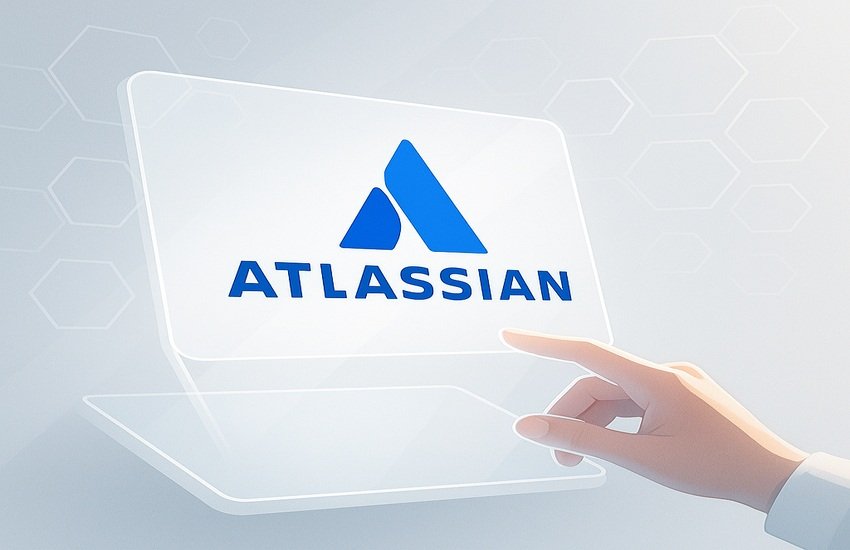Continue Reading With Our 7-Day Free Trial
In a striking move that could redefine its trajectory in the AI era, Atlassian has announced its intent to acquire artificial intelligence startup DX for $1 billion in a cash-and-stock transaction. This development follows a strong fiscal year 2025 for the collaboration software giant, which closed out the year with over $5.2 billion in revenue and $1.4 billion in free cash flow. The deal is expected to close in Q2 of fiscal 2026 and, notably, will not impact Atlassian’s previously issued fiscal 2027 adjusted operating margin target. The acquisition marks a deliberate push into engineering intelligence as the company looks to fuse DX’s developer productivity tools with its existing AI-powered Teamwork platform. CEO Mike Cannon-Brookes emphasized that this acquisition is designed to help over 300,000 customers measure the real value of their AI investments. With the company seeing record enterprise deal wins and increasing AI adoption, this purchase could potentially unlock several synergies — or, conversely, create new challenges.
Accelerating AI Integration Through DX’s Engineering Intelligence
Atlassian’s acquisition of DX provides a unique opportunity to deepen its integration of AI into engineering workflows, leveraging DX’s research-driven approach to developer productivity and experience. By merging DX’s data-driven insights with Atlassian’s Teamwork platform, the company stands to create a powerful analytics layer that helps engineering teams assess performance, bottlenecks, and outcomes with unprecedented precision. This capability is particularly relevant as Atlassian continues to push its cloud migration agenda and aims to serve a growing enterprise customer base. In Q4 FY2025 alone, the company saw a 2x increase in $1M+ ACV deals and 50% quarter-over-quarter growth in AI adoption across its platform. DX’s value proposition of blending qualitative feedback with quantitative signals complements Atlassian’s vision of building a system of work that can adapt to both business and technical users. Furthermore, DX’s existing toolsets can expand the breadth of Atlassian’s offerings, especially in areas like developer experience benchmarking, root cause analytics, and continuous feedback loops. These capabilities could eventually be embedded into Jira and Confluence, enabling AI to not just automate workflows but also guide strategic decision-making. This aligns with Atlassian’s broader narrative of being a critical platform for collaboration in the AI era, where more users are creating software across non-traditional departments like HR, marketing, and finance. Ultimately, DX offers Atlassian a way to provide actionable insights at scale, improving ROI for clients deploying AI tools while further entrenching Atlassian’s platform in daily enterprise operations.
Unlocking Monetization Potential Via Premium AI Services
A critical area where synergies may materialize is monetization. While Atlassian has historically prioritized user adoption and engagement over immediate revenue gains for AI features, the integration of DX could tilt this balance. Atlassian’s premium and enterprise editions, which saw 40% YoY growth, already offer increased AI credits and functionality. Embedding DX’s real-time analytics into these tiers could justify additional pricing power, subscription upgrades, and even standalone service modules. Currently, Atlassian’s cloud net revenue retention stands at a healthy 120%, a figure that could further improve with the kind of differentiated value that DX brings. Internally, Atlassian is already demonstrating increasing AI utility with 5x growth in token usage and strong uptake in tools like Confluence AI editor, which has led to 15% more pages and 33% more edits. DX’s AI could amplify these patterns by enabling predictive alerts, developer sentiment tracking, and objective ROI dashboards for engineering initiatives. Moreover, the potential to roll out consumption-based pricing through Forge extensibility, Bitbucket pipelines, and Jira Service Management virtual agents offers Atlassian multiple avenues to convert usage into revenue. While the company remains cautious about over-promising near-term monetization, especially with its FY2026 guidance embedding nominal AI revenue expectations, the long-term pathway is being steadily paved. With DX’s integration, Atlassian could accelerate its strategy of converting AI engagement into subscription stickiness, cross-sell opportunities, and ultimately, higher lifetime customer value across both technical and business segments.
Strengthening Atlassian’s Enterprise Playbook
Another synergy lies in bolstering Atlassian’s evolving enterprise strategy. Fiscal year 2025 was a breakout year in this segment, marked by 60% YoY growth in Data Center-to-cloud migrations and multiple wins involving high tens of thousands of seats. DX’s integration could support this momentum by giving enterprise clients a more robust view into developer performance, system-level friction, and engineering ROI. As Atlassian CEO Mike Cannon-Brookes noted, more enterprises are going “wall to wall” with Atlassian’s system of work, consolidating away from fragmented tool stacks. DX fits neatly into this vision by offering a unified lens for understanding where teams are thriving and where they are not. Such insights are invaluable for CIOs and CTOs tasked with optimizing software delivery across geographically distributed teams. Moreover, this acquisition aligns with Atlassian’s new partnership with Google Cloud, aimed at advancing AI solutions and enhancing multi-cloud resilience. Large enterprises increasingly demand real-time observability into their workflows, and DX can serve as the analytical backbone that powers these insights. It also complements other Atlassian assets like Rovo Dev, the company’s AI developer tool, by enabling cross-functional visibility into engineering outputs and bottlenecks. Combined, these capabilities enhance Atlassian’s appeal to high-spend, complex organizations where precision and transparency are crucial. As Brian Duffy leads go-to-market expansion, having a product like DX could reduce sales friction, support faster deal cycles, and provide a compelling hook for platform-wide standardization within the Global 2000 cohort.
Expanding TAM By Bridging Developer & Business User Workflows
Perhaps the most compelling synergy from acquiring DX lies in Atlassian’s ability to expand its total addressable market (TAM) by connecting developer workflows with business operations. Currently, about 50% of users on Atlassian’s core apps are business users, yet their penetration across typical enterprise departments remains lower compared to engineering teams. DX’s platform, with its blend of productivity analytics and feedback-driven insights, could bridge this divide. For instance, product managers, marketing leads, or operations heads could use DX-powered dashboards to understand the engineering throughput, velocity, and outcomes that are directly tied to their business objectives. This could result in more collaborative planning, efficient resource allocation, and better alignment across cross-functional teams. Atlassian’s emphasis on being the “system of work” for the Fortune 500,000 gains credibility when AI-powered visibility tools make cross-departmental collaboration tangible. DX’s frameworks could also underpin new product offerings tailored for non-technical roles, such as project managers or business analysts, who require insight into engineering work without needing to navigate Jira’s technical depth. Furthermore, by embedding DX intelligence into the Teamwork Collection—a bundled offering that already exceeded internal expectations since its recent launch—Atlassian can amplify its value proposition across a broader set of decision-makers. As AI continues to democratize software creation, with more non-engineers contributing to development, DX can act as the connective tissue that links their input to measurable technical outcomes. This not only deepens engagement but potentially unlocks new revenue opportunities via expanded seat growth and value-added services.
Key Takeaways
Atlassian’s proposed $1 billion acquisition of DX represents a calculated move to consolidate its standing in the AI-powered collaboration and developer tooling space. The potential benefits are significant: deeper AI integration, enhanced monetization, strengthened enterprise momentum, and expansion into adjacent markets through broader workflow connectivity. However, the risks should not be underestimated. Atlassian’s historical LTM valuation metrics remain elevated—with EV/Sales at 8.21x and EV/GP at 9.91x as of September 2025—signaling high investor expectations. At the same time, its LTM EV/EBITDA and EV/EBIT remain deeply negative, pointing to profitability concerns that could be exacerbated by integration costs, culture mismatches, or execution missteps. The market’s broader skepticism about AI’s impact on developer roles and enterprise software growth may also complicate investor sentiment. Whether the DX acquisition ultimately becomes a flywheel for Atlassian’s long-term strategy or a costly distraction depends on post-deal integration, measurable customer value, and the company’s ability to maintain discipline in both innovation and profitability. At present, the jury is still out.





